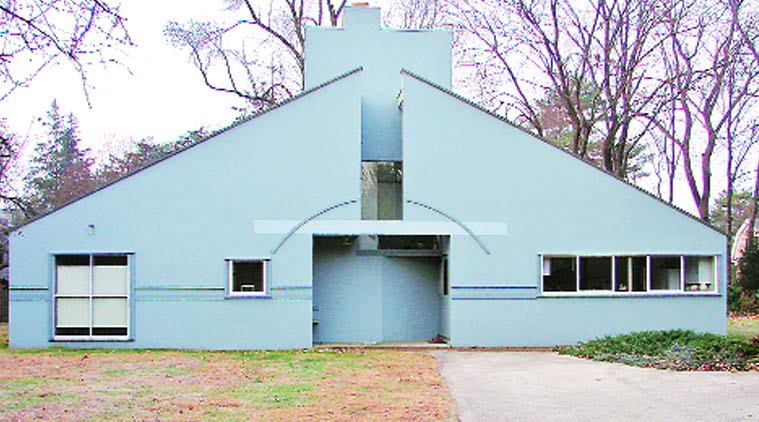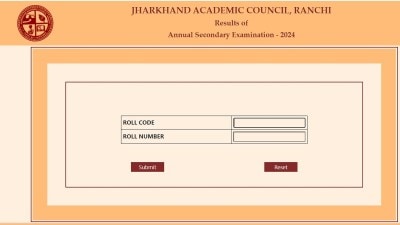- India
- International
Building Blocks
A book that raises designer concerns about architecture, but gives little direction about its future
 The award-winning Vanna Venturi House in Philadelphia, Pennsylvania, USA, designed by Robert Venturi for his mother, was one of his successes.
The award-winning Vanna Venturi House in Philadelphia, Pennsylvania, USA, designed by Robert Venturi for his mother, was one of his successes.
Book: The Future Of Architecture in 100 Buildings
Author: Marc Kushner
Publisher: Simon and Schuster
Pages: 176
Price: Rs 350
If a surgeon were to explain the story of medicine in 100 operations, he would, in all probability, be disbarred from practice. But unlike medicine’s strict code of ethics, architecture’s scope and spread follows an unusual arc of possibility. For most, it is a mere design profession that allows you to do standard layouts of buildings in an office atmosphere, to collect fees so that you can live well, pay your bills and go on yearly vacations to Bali.
For some, it is a social science that makes you seek new ways to construct low-cost housing and slum projects with mud, resin, cowdung, and thus, appease your conscience. For a few, architecture is a rare form of high art that embodies the three noble truths: architecture as fashion statement, as heroic structure, and as lifestyle experiment — always expressed with great whimsy, pretension and pride.
The most important statement to emerge from The Future of Architecture in 100 Buildings is that architecture is genuinely useless activity, one of those rare professions that needs no depth or writing to convey ideas. Instead, pictures can be used to tell a story. The book starts on a sensible premise: why do people ask so little of their buildings? How do their low expectations of architecture affect their everyday lives? A valid enquiry, but the answers provided take the debate into shallow waters.
Marc Kushner is like a child with an expensive camera, released into a Disneyland of architecture. The most important structures, he says, make statements about “skin” and “shadow”, transparency and visibility, technology and temporality. While these may be valid designer concerns, rarely does the picture book narrative talk about human beings and habitation, culture and social norms, or the old adage that “real architecture is mere background of life”.

Instead, buildings must be made surreal or fantastical. Since the best work is flippant and mindless, the world’s most ingenious architects are assiduously working on buildings in London, New York and Shanghai, ensuring that they look different — like shards of glass, or skyscrapers out of alignment. When architecture prizes are awarded to buildings that shake and gyrate, or to those that are designed like saucepans for dog food, it is important for architects to even reconsider the vocabulary of construction. When American architect Robert Venturi made a building shaped like a rubber duck, people took him seriously; historians wrote lengthy treatises on his contribution to commercial architecture. The rubber duck was to Venturi, what the Campbell soup can was to Andy Warhol.
Kushner similarly believes that if you build anything as large as a building, people will notice it only if you give it an unusual shape or an outlandish function. The TED lecture — of which the book is a result — poses the argument that architecture must look interesting for people to engage with it. Where the book succeeds is in the display of technical and structural virtuosity. There are houses that cling to the edge of a cliff; others that are partially, though awkwardly; suspended 10 feet above ground; rubble from earthquake disasters is made into a museum in China; in Philadelphia, a godown is converted into a house for a millionaire industrialist. Should buildings trick you into believing they are spaceships, or mushroom umbrellas or a cloud cover? Can restaurants be built in concrete sewer pipes, as in Melbourne? Amongst the wide range of incongruous projects from Europe, US, Japan, China and elsewhere, there is, fortunately, none from India. In a country where much of the architecture resembles a broken urinal, that is, perhaps, a luck of the draw.
In any case, architecture is far more interesting as a social science than an irrelevant mascot of design. It poses nagging but critical questions on why people live the way they do, how they may live in the future. The book provides no clues in that direction. So, if you are looking to indulge in the fancies of building as a fashion statement, then The Future of Architecture is the right book. If however you are interested in the future of architecture, then look elsewhere.
Gautam Bhatia is a Delhi-based architect, artist and writer
Apr 19: Latest News
- 01
- 02
- 03
- 04
- 05


































